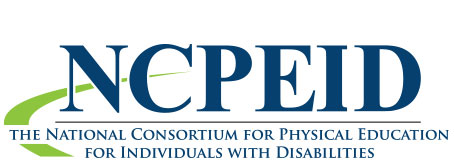|
NBPTS (2014)
|
APENS (2020)
|
|
1. Knowledge of Students:
Accomplished teachers attain knowledge of their students’ unique qualities and characteristics to build positive relationships and create meaningful learning experiences that cultivate beneficial attitudes toward lifelong physical activity and wellness.
|
1. Human Development
2. Motor Behavior
6. Unique Attributes of Learners
|
|
2. Knowledge of Subject Matter:
Accomplished teachers utilize the depth and breadth of their content knowledge to develop physically educated learners.
|
1. Human Development
2. Motor Behavior
3. Exercise Science
4. Measurement and Evaluation
5. History and Philosophy
7. Curriculum Theory and Development
8. Assessment
12. Student and Program Evaluation
|
|
3. Curricular Choices:
Accomplished teachers make purposeful curricular choices that address student needs and interests by promoting comprehensive physical education programs in support of lifelong physical activity and wellness.
|
6. Unique Attributes of Learners
7. Curriculum Theory and Development
9. Instructional Design and Planning
|
|
4. Wellness within Physical Education:
Accomplished teachers interweave wellness throughout their curricula to provide students with the information and experiences they need to make independent choices that positively affect their health and lifelong well-being.
|
3. Exercise Science
7. Curriculum Theory and Development
9. Instructional Design and Planning
10. Teaching
|
|
5. Learning Environment:
Accomplished teachers set high expectations and create positive, well-managed classroom environments that engage all students within a safe and respectful culture of learning.
|
6. Unique Attributes of Learners
7. Curriculum Theory and Development
9. Instructional Design and Planning
10. Teaching
12. Student and Program Evaluation
14. Ethics
|
|
6. Diversity and Inclusion:
Accomplished teachers create inclusive and productive learning environments that are safe, fair, and equitable for all students. They promote healthy social interactions within their schools and communities by teaching students to embrace their uniqueness and respect the diversity of others.
|
6. Unique Attributes of Learners
7. Curriculum Theory and Development
9. Instructional Design and Planning
10. Teaching
14. Ethics
|
|
7. Teaching Principles:
Accomplished teachers implement effective teaching practices that set high expectations and maximize student engagement to advance student learning and promote lifelong well-being.
|
9. Instructional Design and Planning
10. Teaching
|
|
8. Assessment:
Accomplished teachers select, design, and utilize assessments to improve student learning, modify instruction, enhance physical education programs, and demonstrate professional accountability.
|
8. Assessment
12. Student and Program Evaluation
|
|
9. Reflective Practices:
Accomplished teachers engage in meaningful introspection that challenges, informs, and guides all aspects of pedagogy and professional growth for the purpose of improving student learning.
|
10. Teaching
11. Consultation and Staff Development
12. Student and Program Evaluation
13. Continuing Education
|
|
10. Collaboration and Partnership:
Accomplished teachers recognize that their responsibilities extend beyond the classroom. They collaborate with other educators and work in partnership with stakeholders to strengthen physical education programs and enhance student learning.
|
11. Consultation and Staff Development
15. Communication
|
|
11. Professional Growth:
Accomplished teachers are respected leaders who diligently pursue personal and professional growth to improve teaching practices and meet the diverse needs of students.
|
11. Consultation and Staff Development
13. Continuing Education
15. Communication
|
| 12. Advocacy:
Accomplished teachers are effective advocates for quality physical education. They create opportunities to promote wellness and healthy lifestyles among students, colleagues, families, and community members.
|
11. Consultation and Staff Development
15. Communication
|
